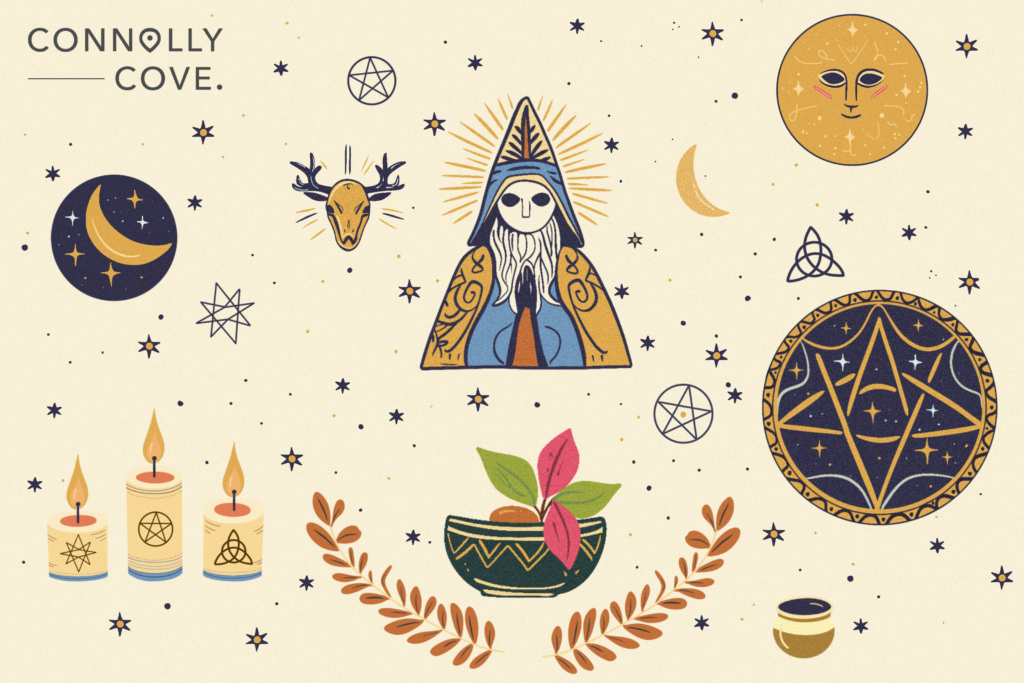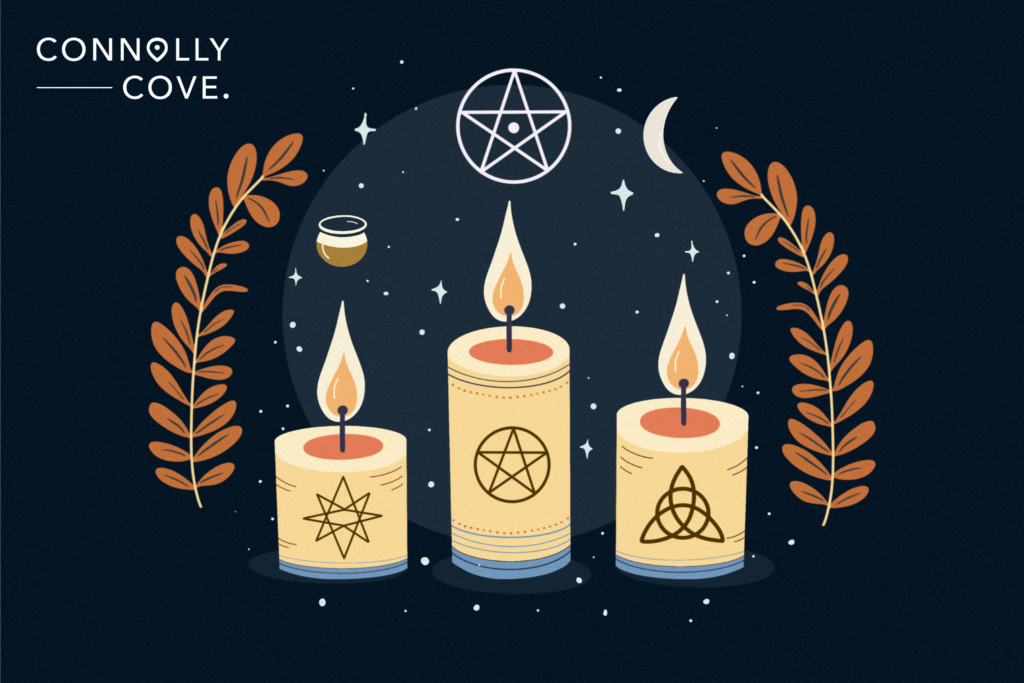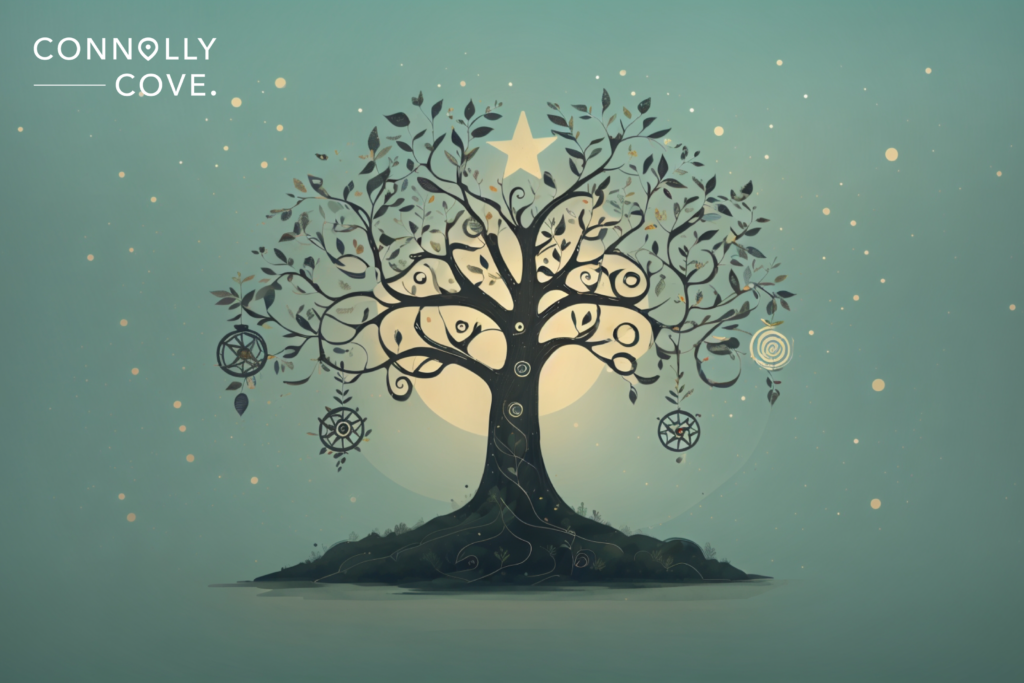Is Christmas a Pagan Holiday? The Deep Origin of Traditions

Updated On: April 21, 2024 by Maha Yassin
Christmas is meant to be a joyous time of year, filled with festive decorations, gift-giving, and time spent with loved ones. However, some people believe that Christmas has pagan origins and is not a Christian holiday at all. This belief stems from the fact that many traditions associated with Christmas, such as the use of evergreen trees, holly, and mistletoe, have their roots in ancient pagan rituals.
The celebration of pagan holidays, such as the winter solstice, the birth of the sun, and the worship of various pagan gods, all played a role in developing the Christmas holiday as we know it today. These connections have led some to question Christmas’s true religious significance and argue that pagan beliefs and practices have heavily influenced it.
Despite the modern Christian context in which it is celebrated, the debate over the pagan origins of Christmas continues to be a point of contention for some individuals.
Key Takeaways
- Christmas is a celebration of the birth of Jesus. It is celebrated by many communities around the world with traditions varying from one place to another.
- In recent years, commercial aspects of Christmas celebrations have become more prominent than traditional ones.
- Attending church services and doing charity are some of the main religious aspects of celebrating Christmas.
- Decorating a Christmas tree and hanging mistletoes on door frames are pagan traditions that made their way to Christmas celebrations through the years.
The Origin of Christmas and the Birth of Jesus
The origin of Christmas dates back to the birth of Jesus Christ, a key figure in Christianity. The celebration of Christmas revolves around honouring and remembering the birth of Jesus, which is central to the Christian faith. The date of Jesus’ birth is unknown, but 25 December was chosen as the day to celebrate Christmas in the 4th century by Roman Emperor Constantine. This date coincided with the existing pagan holiday of winter solstice celebrations, making it easier for the Christian church to replace these festivals with Christmas.
Over time, Christmas has become a widely celebrated holiday within Christian communities and by people of many different faiths and cultures worldwide. Many of the traditions associated with Christmas, such as exchanging gifts, decorating trees, and sharing meals with loved ones, have evolved over centuries and have been influenced by various cultures and customs.
While the commercial aspects of Christmas have become more prominent in many places, the religious meaning of Christmas remains at the heart of the holiday for millions worldwide. Whether celebrated in a religious or secular context, Christmas is a time of joy, hope, and charity, marking the birth of Jesus and celebrating the spirit of giving and love.

Christmas Traditions: The Religious and the Pagan
Christmas traditions blend religious and pagan holiday customs that have evolved over centuries. The religious aspects of the holiday focus on the birth of Jesus Christ, with practices such as attending church services, singing carols, and displaying Nativity scenes. Meanwhile, many secular traditions, like decorating Christmas trees, hanging mistletoe, and exchanging gifts, trace their origins back to ancient pagan rituals celebrating the winter solstice.
This melding of religious and pagan holiday customs has created a rich tapestry of traditions celebrated worldwide by people of various faiths and cultures during the holiday season.
The Christmas Traditions Derived From Christianity
Many popular Christmas traditions, such as singing carols, attending church services, and the nativity scene, are directly associated with the holiday’s religious significance, focusing on the spiritual aspects of the celebration. These Christmas traditions are the ones most associated with Christianity.
The Nativity Scene
Recreating the Nativity scene as a Christmas tradition is a beautiful way to celebrate the birth of Jesus and remember the holiday’s true meaning. Many families and communities around the world participate in this tradition by setting up their own Nativity scene in their homes, churches, and public spaces. It allows people to reflect on the story of Jesus’ birth and to create a visual representation of it.
The tradition of recreating the Nativity scene also provides an opportunity for families to come together and work on the display, fostering a sense of togetherness and unity during the holiday season. Additionally, it serves as a way to teach younger generations about the significance of Christmas and the religious aspect of the holiday.
Recreating the Nativity scene has become a cherished Christmas tradition that helps keep the focus on the spiritual aspects of the holiday amidst consumerism and commercialization.
Church Services
Attending church services is a cherished Christmas tradition for many people. It is a time to come together with family and friends to celebrate the birth of Jesus and reflect on the holiday’s true meaning. The atmosphere in the church is often filled with joy and warmth as everyone sings carols, listens to the Christmas story, and takes part in special prayers and rituals.
Many people find comfort and peace in attending church services during the holiday season, as it can be a time of reflection and renewal. It also provides a sense of community and togetherness as people come together to worship and share in the season’s celebration. For some, attending church services is a way to carry on age-old traditions and connect with their faith. Overall, attending church services at Christmas time is a meaningful and special tradition for many people, a way to connect with loved ones and celebrate the true spirit of the holiday.
Charitable Acts
Another religious tradition is spreading joy through charitable acts and goodwill towards all, inspired by Jesus’ teachings of love and compassion. This concept is deeply ingrained in many religious traditions, including Christianity, Islam, Judaism, Hinduism, and Buddhism. The idea is to spread happiness and alleviate suffering by performing acts of kindness and generosity towards others.
In Christianity, this concept is often manifested through acts of charity, such as feeding the hungry, caring for the sick, and helping the poor and marginalized. Christians are encouraged to follow the example of Jesus, who ministered to the needy and emphasized the importance of love and compassion.
Spreading joy through charitable acts and goodwill towards all is a universal value shared across many religious traditions. It is a powerful expression of love, compassion, and solidarity, and it has the potential to create positive change and promote greater harmony and understanding between people of different faiths and backgrounds.

Lighting Candles
The custom of lighting candles signifies the spiritual enlightenment brought by Jesus Christ. Lighting candles has many spiritual and symbolic meanings in different cultures and religious traditions. In Christianity, lighting candles is often associated with prayer, meditation, and spiritual awakening. Lighting a candle can symbolize the presence of the divine, the spreading of light in the darkness, and the hope and peace of Christ.
In the Christian tradition, lighting candles during religious services, especially Advent and Christmas, represents the spiritual enlightenment and the coming of Christ as the world’s light. It also symbolizes the presence of God and the power of prayer to bring light into the world’s darkness.
The custom of lighting candles is a way for believers to physically and spiritually connect with the divine and to symbolize their faith, hope, and devotion. It is a powerful and meaningful practice that has been passed down through generations and continues to be a cherished tradition in the Christian faith.
The Christmas Traditions with Pagan Holiday Roots
However, Christmas also incorporates traditions linked to pagan holiday festivals and celebrations, such as the winter solstice and Saturnalia, possibly leading some to believe in the holiday’s pagan origins. However, these traditions have been adapted to Christmas traditions and are mostly not meant to celebrate pagan holidays.
Holly, Ivy, and Mistletoe
The tradition of decorating with holly, ivy, and mistletoe has roots in pagan holiday rituals associated with nature worship and the winter solstice. Holly, ivy, and mistletoe were believed to have magical properties and were used in ancient rituals to ward off evil spirits and bring fertility and good fortune. Holly, with its evergreen leaves and red berries, symbolized eternal life and rebirth, while ivy was associated with immortality and was thought to protect against misfortune. Mistletoe was considered to have mystical powers and was often used in ceremonies related to fertility and healing.
When Christianity spread across Europe, many pagan holiday customs were incorporated into Christmas traditions. Holly, ivy, and mistletoe were seen as symbols of Christ’s sacrifice and the promise of eternal life and were eventually integrated into the Christmas decorations we see today.
The Yule Log
The custom of the Yule log originates in Norse paganism, symbolizing the return of the sun and the lengthening of days after the winter solstice. In ancient Norse culture, the Yule log was a large, carefully selected log meant to burn for twelve days during the winter solstice, also known as Yule. The log was often chosen from the biggest and most sacred tree in the forest, and its burning was seen as a way to honour the Norse god Thor and to ask for protection and fertility for the coming year.
As Christianity spread through Europe, the Yule log tradition evolved and became associated with Christmas. In many European countries, the Yule log was brought into the house on Christmas Eve and ceremoniously lit with a piece of last year’s log, symbolizing the continuity of life and the hope for a bountiful new year.
Santa Claus
The association of Santa Claus with Christmas stems from the merging of Christian and pagan figures, as the legendary figure of Santa Claus is influenced by the Norse god Odin and other pagan deities. Odin, the chief god in Norse mythology, was often depicted as a bearded old man who would travel the world during the winter solstice, granting gifts to those who were deserving. This resembles the modern image of Santa Claus travelling the world on Christmas Eve to deliver presents to children.
St. Nicholas also played a role in the development of Santa Claus. St. Nicholas was a 4th-century Christian bishop known for his generosity and gift-giving, and his feast day was celebrated on 6 December. Over time, the traditions and stories surrounding St. Nicholas merged with those of Odin and other pagan figures to create the modern-day image of Santa Claus.

Decorating a Christmas Tree
The tradition of decorating a Christmas tree has some pagan origins, with the use of evergreen trees and branches symbolizing life and fertility in pagan customs. The use of evergreen trees in winter rituals predates the arrival of Christianity, with ancient peoples such as the Romans, Celts, and Vikings bringing greenery into their homes to ward off the cold, dark days of winter. The Romans celebrated the festival of Saturnalia by decorating their homes with greenery. At the same time, the Celts believed that evergreen plants could ward off evil spirits and bring about the return of spring.
German Christians are often credited with popularizing the Christmas tree tradition in the 16th century, eventually spreading throughout Europe and beyond. The tradition of decorating the Christmas tree with lights, ornaments, and garlands can also be traced back to pagan customs, as these decorations were used to symbolize the sun, moon, and stars and to bring light and warmth into the home during the darkest time of the year.
Today, the Christmas tree is a beloved symbol of the holiday season for people of many different cultures and religious backgrounds, and its origins in pagan traditions serve as a reminder of the rich history and diverse customs that have shaped the celebration of Christmas throughout the centuries.
In conclusion, while many Christmas traditions are rooted in Christianity, the incorporation of customs with pagan origins has led some individuals to view Christmas as a holiday with both religious and pagan influences. That is understandable, considering the pagan impact that inspired Christmas celebrations over the decades. However, in the end, Christmas is a Christian holiday, no doubt, even if it changes and adapts to the world around it.
FAQs
Was Jesus actually born on 25 December?
There is no accurate historical account of when Jesus was actually born. The closest date is that he was born around 6 BC and 4 BC in Bethlehem, Palestine. The date 25 December was claimed by Pope Julius I in 350 AD.
What is Halloween in pagan?
The pagan holiday of Samhain is considered to be the origin of Halloween celebrations. It is also celebrated on 31 October of every year as the Celtic celebration of the New Year and the end of summer.
What holidays are actually pagan?
New Year’s Day, Easter and Halloween all have pagan origins. These originally pagan holidays were adapted into modern traditions and are celebrated by people all over the world in their own way.
What do pagans believe?
Pagans believe in the sacristy of nature and the cycle of life. They do not believe in god or in a higher power like Christians, Muslims or Jewish People.






